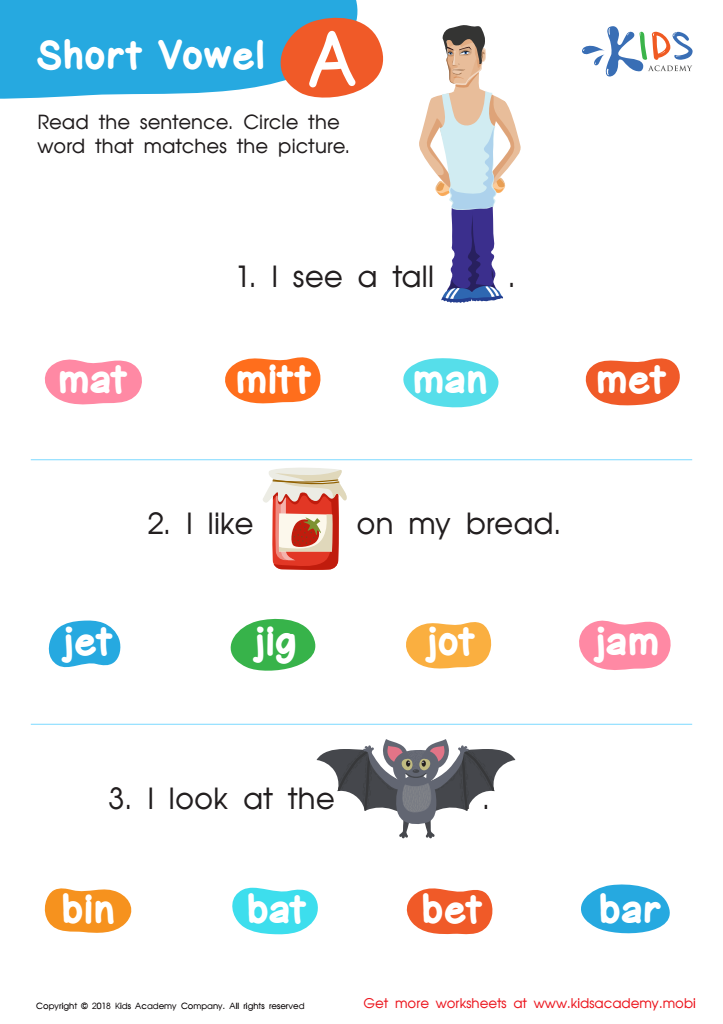Reading Skills Normal Vowels Worksheets for Ages 4-6
3 filtered results
-
From - To
Welcome to our "Reading Skills Normal Vowels Worksheets" for children ages 4-6! These engaging worksheets are designed to nurture young learners' reading skills through fun and interactive activities focused on normal vowels. Our carefully crafted exercises help kids recognize vowel sounds, enhance phonemic awareness, and improve their decoding skills essential for reading development. With colorful illustrations and age-appropriate tasks, children will enjoy practicing vowel recognition and sound blending in a playful way. Perfect for home or classroom use, these worksheets offer a valuable resource for early education. Dive into our collection and support your child's literacy journey today!


Long and Short Vowel Match up Reading Worksheet


Short Vowel /a/ Worksheet


Short Vowel Eggs Worksheet
Parents and teachers should care about reading skills, particularly the understanding of normal vowels, for ages 4-6 because this foundational knowledge significantly impacts children's literacy development. At this early age, children are beginning to grasp basic phonetic principles, and vowels are crucial for decoding words. Learning about normal vowels—A, E, I, O, U—helps young learners recognize patterns in words, fostering reading fluency.
Mastering vowel sounds is key to progressing from simple, familiar words to more complex ones, which enhances their overall reading comprehension. When children can identify and use vowel sounds correctly, they gain confidence and enjoyment in reading, enabling them to explore stories independently. Additionally, strong reading skills correlate with success in other academic areas, sharpening critical thinking and communication skills.
Engaging learners with activities focused on normal vowels, such as songs or games, makes the learning process enjoyable and effective. This foundational stage also lays the groundwork for more advanced reading strategies, essential for lifelong learning. Ultimately, investing time in fostering these skills early on nurtures a love of reading and bolsters a child's academic journey. Parents and teachers play a vital role in guiding them through this important phase of development.
 Assign to My Students
Assign to My Students














